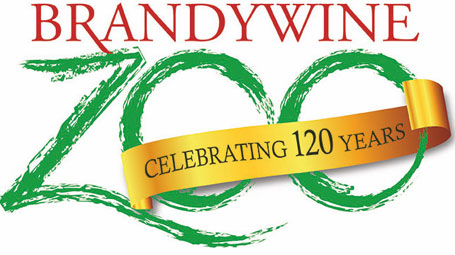Via The News Journal
Temperatures may be frigid at Brandywine Zoo, but work has been going all winter on improvements with an eye toward a sunny, warm spring and the opening of a new season at the 111-year-old site.
Projects are underway as the zoo nestled in Brandywine Park in Wilmington seeks reaccreditation from the Association of Zoos and Aquariums, a Silver Spring, Maryland, organization that certifies 230 institutions. The designation allows Brandywine, which was first granted certification in 1981, to accept animals on loan and participate in species survival partnerships.
“It is very important to us because it means we are part of the cream of the crop,” said Mike Allen, executive director of the Delaware Zoological Society, the nonprofit group that operates the zoo in partnership with the state.
The zoo, which reopens in March, has about 150 animals, including a pair of red pandas, a bobcat, goats, a tiger and an Andean condor, in exhibits on nearly 13 acres, and more are being added.
About 90,000 visitors paid the admission price of $5 to $7 last year. The facility, which has an annual budget of $1.5 million, relies on donations to fund improvements, while the state covers salaries of handlers, caretakers and other employees.
Improvements this winter include installing new fencing and holding areas. But the largest project is Eagle Ridge, a new walkway that’s been in the works since the zoo acquired two female bald eagles several years ago. One isn’t able to live in the wild because she has lead in her bloodstream, and the other can’t fly after falling out of her nest as a fledgling during a tornado in Pennsylvania.
Zoo board member Bob Grove said they realized that because the animals are popular, they would need to improve access to see their exhibit.
“We knew that we were going to have eagles come to the zoo, and we wanted to make it a showcase exhibit so we knew immediately that we would have to address that,” he said.
Grove, who is an architect, drew up plans for free and work started in October. A total of $100,000 was secured by state Reps. Gerald Brady, Stephanie T. Bolden and Charles Potter and Sens. Harris McDowell and Robert Marshall.
On a recent afternoon, crews put the finishing touches on mesh walls that line the wooden ramp leading to the otter exhibit alongside the eagles. The project is in the far end of the zoo, atop a hill that offers views of the Brandywine.
Zoo Director Gene Peacock said the project is important because it takes an area not accessible to those in wheelchairs or parents pushing strollers and allows all guests to catch a glimpse from the highest point.
“A narrow path was the only way to get up close to see the eagles and the otters from above,” he said.
Amy Goodman, an Elsmere resident who has a membership to the zoo for her family, said she can’t wait to bring son Brayden, 3, and daughter Leah, 7 months, once the weather improves to get a good view of the eagles.
“Usually, I would have to separate from my husband,” she said. “I would stay with the stroller, and he would take the kids up the steps to see them.”
Now, she said, they will get to all watch the animals together, although Goodman said she thinks she enjoys watching the large birds of prey more than her children do.
A connection to Central Park
The project is the latest evolution of the tiny zoo in Brandywine Park, which was designed by Frederick Law Olmsted, the landscape architect behind New York City’s Central Park and the Boston Common. In 1905, the Wilmington Board of Park Commissioners, who ran the park at the time, created the zoo and exhibited ducks, geese, hares, a sea turtle and a seagull in the original collection. In the 1920s, the zoo expanded and the operation was overseen by the Wilmington Free Zoological Associations, created a decade before.
Throughout the century the zoo changed and grew, surviving waves of neglect and disrepair to be reborn as a family fun, state-of-the-art facility accredited by the AZA in the 1980s. The zoo at a time was under the auspices of New Castle County but is now part of the state Parks and Recreation Division, although the Delaware Zoological Society runs daily operations and fundraising for facility improvements. The zoo also runs an education program offering camps, workshop events and school visits for children and adults to meet and learn about animals up close.
The zoo has invested about $250,000 in improvements, doing the most work on the property since the 1990s when a gift shop and condor exhibit was built.
A master plan was developed in 2007, which called for about $10 million in improvements across the zoo, but fundraising stalled during the recession. Megan McGlinchey, president of the Delaware Zoological Society board, said they’re exploring whether to launch a capital campaign to start improvements.
A separate plan calls for creating a rain forest exhibit to house monkeys, a toucan and even a jaguar. The proposal was developed before the loss of the beloved Monkey House, which sat just outside the zoo’s main gates and was damaged by a falling tree in summer 2013. The rain forest exhibit was deemed to be a good replacement to display the zoo’s troop. All 24 monkeys and a toucan were relocated to new exhibits inside the zoo, but it was determined the Monkey House was too damaged to save. The structure, which was original to the zoo, was demolished last year.
McGlinchey said the board has been working to ensure the exhibits stay fresh, programs relevant and the zoo structure improving.
“We want to continually upgrade and keep the zoo at a high level,” she said. “We are making it so that folks want to come back and keep coming back year after year.”
‘They keep us coming back’
When the zoo’s season gets into full swing in March, a new exhibit will be added displaying reptiles for the first time since the Monkey House was destroyed.
The prehensile-tailed skinks, green tree python and Caledonian geckos will be the centerpieces at the middle of the zoo.
A new great horned owl also will be on display starting next week. The owl, named Atticus, came to the zoo last summer after he hurt his neck, causing his head to tilt to one side. Zoo staff were able to rehabilitate the bird, but the injury means he can’t be released into the wild.
“Our staff has been glove training him so he can go out occasionally and we can walk him around the zoo,” Peacock said.
A swift fox named Dakota also will be getting a “boyfriend” from Hershey Park’s Zoo America. The pair have been deemed genetically compatible by officials from Association of Zoos and Aquariums Species Survival Plan Program. The program helps sustain threatened or endangered species by breeding them in captivity to ensure their long-term survival.
“It will be like OKCupid.com, but for foxes,” Peacock said. “They will go on dates first. There will be an introduction period. And then he will live in here permanently. The hopes are that maybe they will breed and then we will have fox kits.”
A similar arrangement is not going so well for the pair of burrowing owls at the zoo. A male was brought in last year, and while he is very interested in the female, the two haven’t produced any eggs.
“She’s playing hard to get,” Peacock said. “It’s like that in owl love.”
Zoo visitors this spring also will be greeted by a spiny addition to the menagerie.
Juniper, a 6-month-old North American porcupine, is the newest “animal ambassador” and will go to schools and do special events as part of the zoo education program.
“Juuuuniper,” Peacock crowed during a recent visit, calling for the herbivore like he is calling her to supper. Waking from her nap inside a hollow log, Juniper saunters toward him her white quills standing out like gray hairs against her black fur.
“Hey, sweetie,” he calls. “Come here so I can rub your belly.”
The porcupine complies, using long clawed feet to climb the fence, pressing her underside against it for a quick scratch.
“She is quite the character,” Peacock said.
Peacock predicts these adorable behaviors will make Juniper a big hit for the annual zoo camp sessions and birthday parties.
For Goodman, whose two children will be returning to the zoo many times each year as they grow up, she is glad to see the little zoo continue to grow.
“They keep us coming back,” she said.




